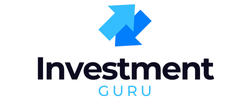Learn how to refinance a mortgage with a 620–660 credit score, including lender options, requirements, and tips to improve approval chances and secure better rates.
While lenders classify this range as “fair” or sometimes “near-prime,” you still have viable options to refinance successfully — provided you understand the requirements, prepare strategically, and compare lenders carefully.
Table of Contents
Why Credit Score Matters When Refinancing
Your credit score is the key metric lenders use to determine your refinance eligibility and interest rate. A higher score signals lower risk, meaning lower rates and better terms. With a score between 620 and 660, you fall into the fair credit category.
According to Investopedia, credit scores between 580–669 are generally considered fair. Lenders may approve you for refinancing, but with potentially higher rates than those offered to borrowers with excellent credit.
Can You Refinance With Fair Credit 620–660?
Yes — but expect some trade-offs. You may not secure the lowest advertised rates; however, you can still achieve meaningful savings or restructure your loan more favorably. Major factors that lenders evaluate when approving refinancing include:
- Your credit score and credit history
- Current debt-to-income (DTI) ratio
- Loan-to-value (LTV) ratio on your property
- Employment and income stability
Comparing Loan Options with 620–660 Credit Score
These are the most common refinancing options suitable for borrowers with fair credit:
| Loan Type | Credit Score Requirement | Benefits | Drawbacks |
|---|---|---|---|
| FHA Streamline Refinance | 580+ | No appraisal, reduced documentation | Upfront and annual mortgage insurance premiums |
| VA Interest Rate Reduction Refinance Loan (IRRRL) | Varies (often 620+) | No appraisal, low costs | Must be a veteran or service member |
| Conventional Refinance | 620 minimum | Option to cancel PMI with 20% equity | Higher interest rates with fair credit |
| Cash-Out Refinance | 620+ | Access home equity for renovations, debt payoff | Stricter LTV requirements, higher interest |
Step-by-Step Guide to Refinancing With Fair Credit

1. Review Your Credit Report
Start by obtaining free copies of your credit report from all three major bureaus at AnnualCreditReport.com. Ensure accuracy, dispute errors, and understand what lenders will see.
2. Improve Your Financial Profile
- Pay down revolving debt to lower credit utilization.
- Avoid opening new credit lines before applying.
- Make all payments on time for at least 6–12 months.
3. Shop Around for the Best Rates
Lender terms vary significantly. Submit applications to multiple lenders (within a short timeframe — typically 14–45 days — counts as one credit inquiry for scoring purposes). Focus on mortgage brokers specializing in borrowers with fair credit.
4. Evaluate Your Home Equity
If your loan-to-value ratio is higher than 80%, you may need private mortgage insurance (PMI). FHA or VA refinances can be good alternatives if equity is limited.
5. Prepare Documentation
Gather recent pay stubs, tax returns, W-2s, bank statements, and a copy of your current mortgage statement. Strong documentation helps offset a lower credit score.
Cost of Refinancing With Fair Credit
Closing costs typically range from 2–5% of the loan amount. With fair credit, expect slightly higher fees due to loan-level price adjustments (LLPAs) imposed by Fannie Mae and Freddie Mac. For example, a $250,000 refinance might involve $5,000–$8,000 in fees.

Refinance Tools & Lender Portals to Get Started
1. Rocket Mortgage
Rocket Mortgage accepts borrowers with credit scores as low as 620. Signing up requires creating an online account, uploading required documents, and verifying employment. Setup is free; costs come from closing fees and optional rate-lock extensions.
2. Better Mortgage
Better Mortgage offers fast online pre-approvals, often within minutes. You’ll need a 620+ credit score. There are no commission fees, though third-party costs apply (title, appraisal, homeowners insurance).
3. LendingTree
LendingTree lets you compare multiple lenders at once. Expect to provide your SSN, current mortgage details, and income verification. While the platform itself is free, each lender will impose its own fees based on your credit tier.
4. CitiMortgage and Chase Home Lending
Traditional banks often require strong documentation, but both Citi and Chase refinance loans for borrowers at 620+. Online dashboards guide you through application tracking after setup.
Ways to Improve Approval Odds Before Refinancing
- Pay down credit card balances below 30% utilization.
- Settle small outstanding collections.
- Add a co-borrower with stronger credit.
- Build reserves — demonstrating several months of mortgage payments in savings can improve lender confidence.

Pros and Cons of Refinancing With 620–660 Credit Score
Pros
- Lower monthly payments may still be achievable
- Possible shift from adjustable to fixed rates
- Opportunity to consolidate debt through cash-out refinance
Cons
- Higher interest rates compared to prime borrowers
- Potential PMI requirements with less than 20% equity
- Closing costs may take longer to break even
Frequently Asked Questions
1. What is the minimum credit score to refinance a mortgage?
Conventional lenders typically require 620, FHA requires 580+, and VA programs vary but often 620+. Your 620–660 score meets minimums.
2. Can I refinance with a 640 credit score?
Yes, both FHA and conventional refinance programs accept 640 scores. Rates may be higher than for prime borrowers.
3. Will I need mortgage insurance with fair credit?
If your equity is below 20% on a conventional loan, you must carry private mortgage insurance (PMI). FHA refinances always require mortgage insurance.
4. How much can I save by refinancing at 660 vs. 620?
At 660, you may qualify for rates 0.25–0.5% lower than at 620. Over a 30-year loan, this translates into thousands in savings.
5. Can I do a cash-out refinance with fair credit?
Yes, but lenders will require a lower loan-to-value ratio (often below 80%), making approval harder with limited equity.
6. How long does refinancing take with fair credit?
The process typically takes 30–60 days, assuming your documentation is complete. Manual underwriting may extend this timeline.
7. Should I add a co-signer to improve my refinance chances?
Adding a co-borrower with strong credit can reduce your rate and improve approval chances significantly.
8. Will multiple lender inquiries hurt my score?
Not if done in a short shopping window (14–45 days) — they count as one inquiry for scoring models.
9. Is FHA Streamline better than conventional for fair credit?
If you already have an FHA loan, the FHA Streamline is often the most favorable option with fewer requirements for those in the 620–660 range.
10. Can I refinance if I recently missed a payment?
Most lenders require at least 12 months without late mortgage payments. A recent delinquency makes approval very difficult.
Conclusion
Refinancing with fair credit 620–660 is absolutely possible, but careful preparation makes the difference between approval and denial. By pulling your reports, addressing errors, reducing debt, and comparing lenders, you give yourself the best chance to secure meaningful savings even without a stellar score. Start today by reviewing your credit, checking your home equity, and requesting quotes from lenders who specialize in fair-credit borrowers. Even small improvements in your rate can lead to thousands in lifetime savings.


